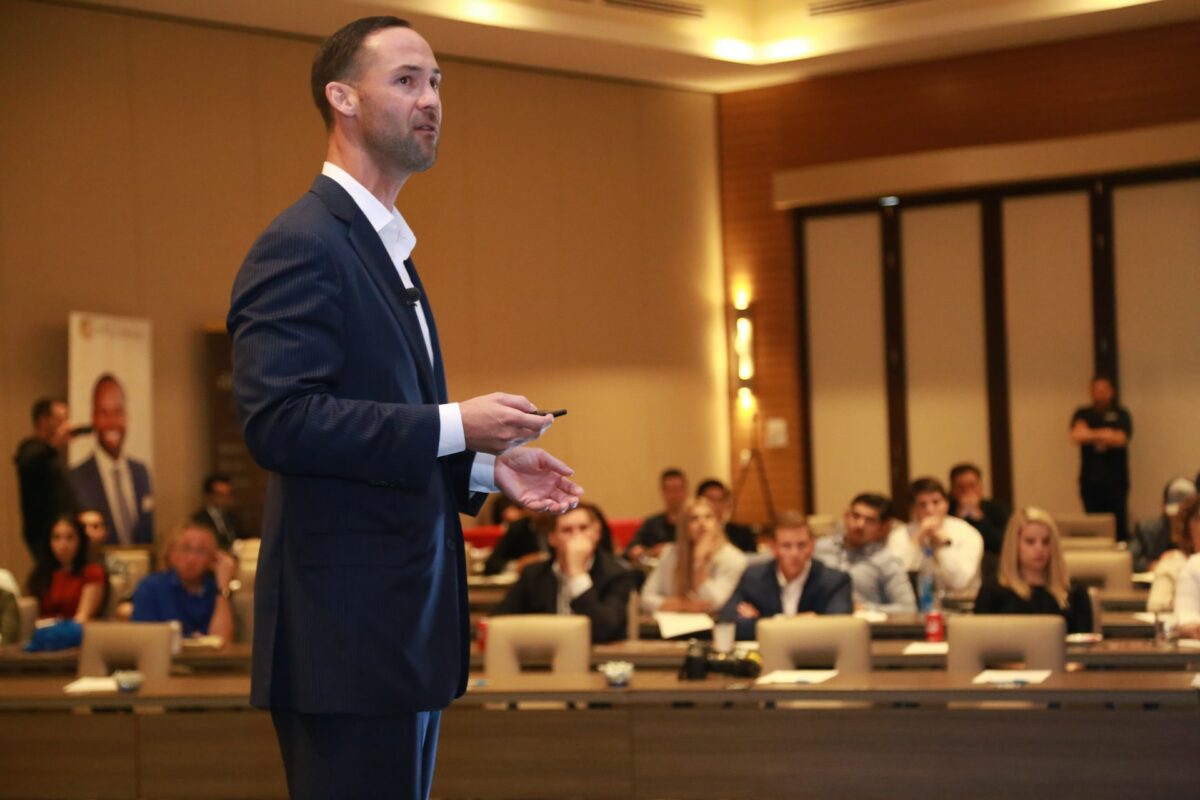Focus group participants are often inspired to articulate themselves more fully and accurately than they could have alone.
Any moderator worth his or her salt does this daily, without consciously using Neuro-Linguistic Programming (NLP) techniques. Many focus group moderators instinctually mirror a participant’s representational system when asking a follow-up question or eliciting greater depth from a projective exercise
Want a participant to keep talking? Then probe in the language of his or her sensory modality.
Sensory Modality and Participant Verbatims
Sensory modalities are part of a NLP model that identifies patterns in how people externalize the information they are processing. When participants talk, they often speak from a state of mind that is more closely aligned with one sense over another. For instance:
Visual That’s a bright idea. I see how I can use the car’s extra space.
Auditory I hear how this makes sense. Let me tell you — this is a winner.
Kinesthetic How fast can I accelerate? I feel like this car was made for me.
Olfactory Smells like a winner. Some ideas stink, but this is coming up roses.
Gustatory That new car looks yummy. It has the fine flavor of elegance.
When you hear someone speak in a particular sensory modality, and you ask questions in that same modality, the person is more likely to continue talking than if you ask a question in a different sensory modality. You are also more likely to get a congruent answer and more likely to keep the participant engaged.
We can see inside participants’ minds — and know how they are processing information or which parts of their brain they are accessing — by their eye movement. Have you ever noticed how a participant’s eyes move when you ask him or her a question? Try this sometime soon… Ask someone this series of questions:
- What did it look like the last time it rained?
- What are the lyrics to “The Star-Spangled Banner”?
Then, watch the person’s eyes. His or her eyes will most likely go the same direction each time, because both questions solicit a recollection. Chances are good that the eyes will go to the right (the person’s left) after each question because approximately 85% of the Western world’s population that has been tested accesses memories by looking to their left. If you want to see a more subtle distinction, when you ask someone to recollect a visual, the person will likely look up and to your right. If you ask someone to recollect a sound, however, the person will likely look directly to your right (his or her left) along a horizontal plane. Here are questions that are a little trickier.
- Please imagine a purple elephant with big orange spots.
- Can you see it?
Most people have never seen such a critter. Their eyes will go back and forth (their left to their right) as they try to remember the components in Vr and then construct the new variant in Vc. Sometimes, an indication of a fib can be seen when a person only looks up to Vc in response to a question that should be easy to recall. Example: What was the party like last night? If the response is all in Vc, perhaps the person queried never attended or was so drunk that he can’t remember. You should always test your assumptions. For practical purposes, when you see someone’s eyes move, you can often infer how that person is accessing what he or she knows.
As a focus group moderator, if you ask a participant about buying a new car and you see her eyes go up, you might ask what she looks for because her eyes going up revealed that she was seeing pictures in her mind. Similarly, if you ask a participant about buying a new car and you see her eyes go horizontally, you might ask what she listens for, because her eyes going sideways revealed that she was hearing words or sounds in her mind.
Again, you need to test your assumptions. Lefthanded people often have reversed eye movements from the general population. Some people move their entire head instead of moving their eyes. Important note: Someone leaning back with his eyes staring at the ceiling may simply be accessing the visual part of his mind. You can test whether he is tracking with you by asking, “What do you see?” If his head shakes before he answers, he was probably daydreaming; however, if he keeps staring as he talks you through what he is seeing, chances are he needs to look up to fully access his ability to visualize. When you speak into a participant’s primary modality, you make it easier for that person to share what’s inside his or her head. Sometimes, the results can look remarkable. People reveal themselves in ways they normally would not.
Neuro-Linguistic Programming
NLP is based on the remarkable work of Dr. Milton Erickson, who was widely recognized as the foremost hypnotherapist of his time. Dr. Erikson was able to ingeniously structure sentences full of vague meanings to help his clients discover how to address their problems and the resources that they already had available to them. His success was based on his ability to read non-verbal behavior (sensory acuity), his ability to establish rapport with his clients, his skill with language patterns and his beliefs about his clients. Bandler and Grinder, the founders of NLP, studied Erickson as part of their development of their approach to working with people.
Here’s a famous illustration of Dr. Erickson’s work. A twelve-year-old boy was brought in to see Erickson about bedwetting. Erickson dismissed his parents and began talking to the boy about other topics, avoiding a direct discussion about bedwetting altogether. Upon learning that the boy played baseball and that his brother had played football, Erickson elaborated on the fine muscle coordination it takes to play baseball, compared to the uncoordinated muscle skills used in football.
The boy listened raptly as Erickson described in detail all the muscle adjustments his body automatically makes in order to position him underneath the ball and catch it. For instance, the glove must be opened at just the right moment and clamped down again at just the right moment. When transferring the ball to another hand, the same kind of fine muscle control is needed. Then, when throwing the ball to the infield, if he lets go too soon, the ball doesn’t go where he wants it to go. Likewise, letting go too late leads to an undesired outcome and, consequently, to frustration. Erickson explained that letting go just at the right time gets the ball to go where the player wants it to go, and that constitutes success in baseball.
Therapy with this young man consisted of four sessions that included talks about other sports, Boy Scouts and muscles. But bedwetting (which is often a muscle-control problem) was not discussed, and “formal hypnosis” was not conducted. The boy’s bedwetting disappeared soon thereafter. Some of Erickson’s tenets appear in the list of NLP Presuppositions. For example:
- Every behavior has a positive intention.
- This is the best choice available to a person, given the circumstances as he or she sees them.
- Respect the other person’s model of the world.
- Resistance in a client is due to a lack of rapport. There are no resistant clients, only inflexible therapists.
Erickson also used a technique that has been labeled “Pacing and Leading” in NLP. He would start by subtly mirroring a client’s physical expression as a way of creating rapport. Think about how a baby delights in being copied. On some level, we all feel “seen” and understood when another person gestures the way we do or uses the same speed of talking and type of language.
Once he established that connection, he would begin to lead the client into a different space, generally what hypnotists call a trance or downtime, where the person is encouraged to explore his inner world. (In NLP terms, uptime is when your senses are focused on the outside world, while downtime is related to your inner thoughts.) As we go through our daily activities, we are continually cycling through uptime and downtime and are often somewhere in between.
So, to pace a respondent, begin by matching her postures and gestures, choice of verbs, tone of voice, etc. Once the connection is made, you can change the tempo and sensory system to elicit responses from all senses — e.g., what did you see, hear, feel, smell, taste or think? This is particularly helpful in any guided imagery exercises you may design. Clients are amazed when respondents report on the colors they saw and the scents they smelled in their reveries.
Contributed to Branding Strategy Insider by: Dr. Sharon Livingston, President, The Livingston Group
The Blake Project Can Help: Accelerate Brand Growth Through Powerful Emotional Connections
Branding Strategy Insider is a service of The Blake Project: A strategic brand consultancy specializing in Brand Research, Brand Strategy, Brand Licensing and Brand Education




